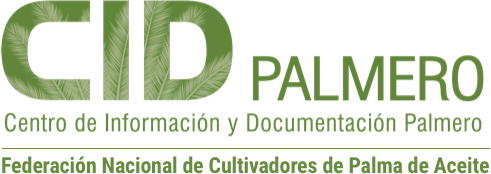High oil palm planting density on deep peat.

Author
Seminar on elevating National Oil Palm Productivity and Recent Progress in the Management of Peat and Ganoderma
May 5-6, 2002 :
Bangi, Selangor, Malaysia :
40260.
Gasbik, Othman
46856.
Jusoh, Latif
44146.
Mohd Tayeb, Dolmat
40262.
Tarmizi, Mohammed Ahmad
46857.
Estadisticas
Abstract
A spacing trial was carried out in 1985 at MPOB's peat research station in Teluk Intan testing two replicates of a split-plot design in which three planting densities (120, 160 and 200 palms/ha) were in the main plots and sub-plots tested fertilizer treatment in 2N x 32PK factorial combination. Guthrie D x P materials were used in the trial. Results based on 13 years yield record (or 16 years planting) showed continued significant in crease in yield with increase in planting densities inspite of the relatively higher Ganoderma incidence on palms at the higher densities (i.e. 14.8 per cent at 120 palms/ha, 15.4 per cent at 160 palms/ha and 20.8 per cent at 200 palms/ha at 16 years of planting). Based on analysis of 3,352 bunches carried out over the years (about 1,000 bunches/density), in crease in the planting density increased the oil/bunch, i.e. 21.3 per cent at 120 palms/ha, 21.8 per cent at 160 palms/ha and 22.3 per cent at 200 palms/ha. Economic analysis carried out showed that oil palm planted at 200 palms/ha on deep peat is a better proposition compared to the current commercially practised 160 palms/ha. Even though the payback period of 7 years was equal between 160 and 200 palms/ha at general charges RM450 and RM550/ha and differed by one year at general charges RM650/ha, the IRR, BCR and especially NPV values were clearly superior at the highest density of 200 palms/ha. Palms planted at 120 palms/ha performed the worst. Studies on the FFB yield responses to NPK ferti!izers generally showed that oil palm on peat requires lower dosages of N and P and relatively higher K inputs. Significant positive effects of N fertilizer (Urea) on FFB yield, bunch number and bunch weight were obtained only in the early years of cropping. No significant response to P fertilizer (CIRP) was obtained except to bunch weight in the later years of cropping where higher application rates of P fertilizer actually reduced the bunch weight. This suggests that extra caution should also be taken when applying P fertilizer to oil palm on peat. As with N, lower rate of P fertilizer dressing should suffice. On the other hand, higher rate o[ K fertilizer application is required. Potassium fertilizer (in this case bunch ash was used) generally increased FFB yield, bunch number and bunch weight, significant' in some years. Incluye 8 referencias bibliográficas. A spacing trial was carried out in 1985 at MPOB's peat research station in Teluk Intan testing two replicates of a split-plot design in which three planting densities (120, 160 and 200 palms/ha) were in the main plots and sub-plots tested fertilizer treatment in 2N x 32PK factorial combination. Guthrie D x P materials were used in the trial. Results based on 13 years yield record (or 16 years planting) showed continued significant in crease in yield with increase in planting densities inspite of the relatively higher Ganoderma incidence on palms at the higher densities (i.e. 14.8 per cent at 120 palms/ha, 15.4 per cent at 160 palms/ha and 20.8 per cent at 200 palms/ha at 16 years of planting). Based on analysis of 3,352 bunches carried out over the years (about 1,000 bunches/density), in crease in the planting density increased the oil/bunch, i.e. 21.3 per cent at 120 palms/ha, 21.8 per cent at 160 palms/ha and 22.3 per cent at 200 palms/ha. Economic analysis carried out showed that oil palm planted at 200 palms/ha on deep peat is a better proposition compared to the current commercially practised 160 palms/ha. Even though the payback period of 7 years was equal between 160 and 200 palms/ha at general charges RM450 and RM550/ha and differed by one year at general charges RM650/ha, the IRR, BCR and especially NPV values were clearly superior at the highest density of 200 palms/ha. Palms planted at 120 palms/ha performed the worst. Studies on the FFB yield responses to NPK ferti!izers generally showed that oil palm on peat requires lower dosages of N and P and relatively higher K inputs. Significant positive effects of N fertilizer (Urea) on FFB yield, bunch number and bunch weight were obtained only in the early years of cropping. No significant response to P fertilizer (CIRP) was obtained except to bunch weight in the later years of cropping where higher application rates of P fertilizer actually reduced the bunch weight. This suggests that extra caution should also be taken when applying P fertilizer to oil palm on peat. As with N, lower rate of P fertilizer dressing should suffice. On the other hand, higher rate o[ K fertilizer application is required. Potassium fertilizer (in this case bunch ash was used) generally increased FFB yield, bunch number and bunch weight, significant' in some years.
A spacing trial was carried out in 1985 at MPOB's peat research station in Teluk Intan testing two replicates of a split-plot design in which three planting densities (120, 160 and 200 palms/ha) were in the main plots and sub-plots tested fertilizer treatment in 2N x 32PK factorial combination. Guthrie D x P materials were used in the trial. Results based on 13 years yield record (or 16 years planting) showed continued significant in crease in yield with increase in planting densities inspite of the relatively higher Ganoderma incidence on palms at the higher densities (i.e. 14.8 per cent at 120 palms/ha, 15.4 per cent at 160 palms/ha and 20.8 per cent at 200 palms/ha at 16 years of planting). Based on analysis of 3,352 bunches carried out over the years (about 1,000 bunches/density), in crease in the planting density increased the oil/bunch, i.e. 21.3 per cent at 120 palms/ha, 21.8 per cent at 160 palms/ha and 22.3 per cent at 200 palms/ha. Economic analysis carried out showed that oil palm planted at 200 palms/ha on deep peat is a better proposition compared to the current commercially practised 160 palms/ha. Even though the payback period of 7 years was equal between 160 and 200 palms/ha at general charges RM450 and RM550/ha and differed by one year at general charges RM650/ha, the IRR, BCR and especially NPV values were clearly superior at the highest density of 200 palms/ha. Palms planted at 120 palms/ha performed the worst. Studies on the FFB yield responses to NPK ferti!izers generally showed that oil palm on peat requires lower dosages of N and P and relatively higher K inputs. Significant positive effects of N fertilizer (Urea) on FFB yield, bunch number and bunch weight were obtained only in the early years of cropping. No significant response to P fertilizer (CIRP) was obtained except to bunch weight in the later years of cropping where higher application rates of P fertilizer actually reduced the bunch weight. This suggests that extra caution should also be taken when applying P fertilizer to oil palm on peat. As with N, lower rate of P fertilizer dressing should suffice. On the other hand, higher rate o[ K fertilizer application is required. Potassium fertilizer (in this case bunch ash was used) generally increased FFB yield, bunch number and bunch weight, significant' in some years.
Palabras clave:
Aplicación de fertilizantes
Densidad de siembra
Ganoderma.
Npk
Rendimiento.
Suelo de turba
Palma de aceite
Aplicación de fertilizantes
Densidad de siembra
Ganoderma.
Npk
Rendimiento.
Suelo de turba
Palma de aceite


